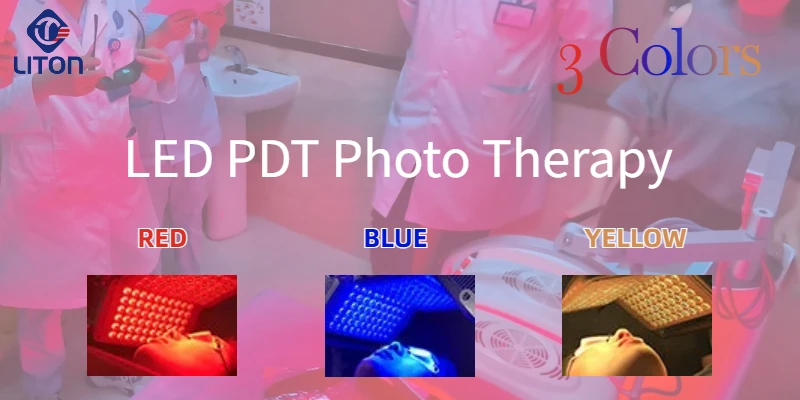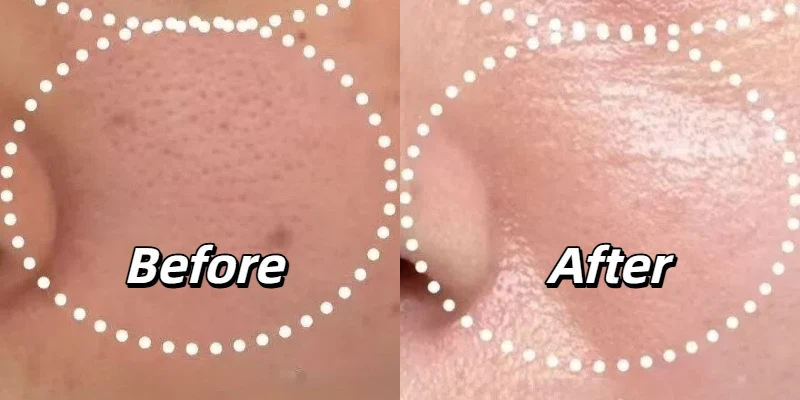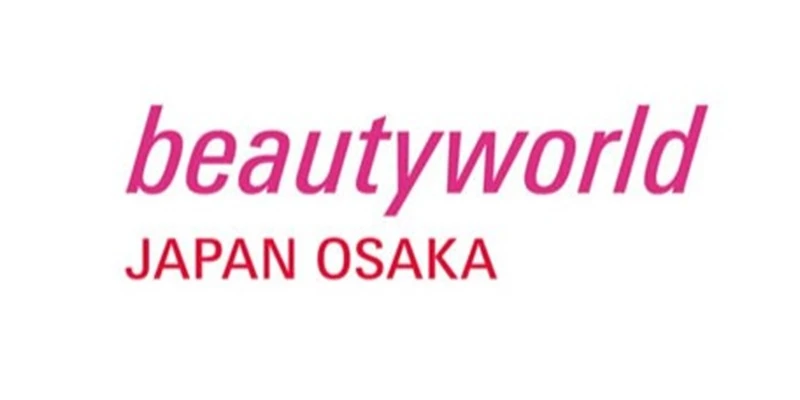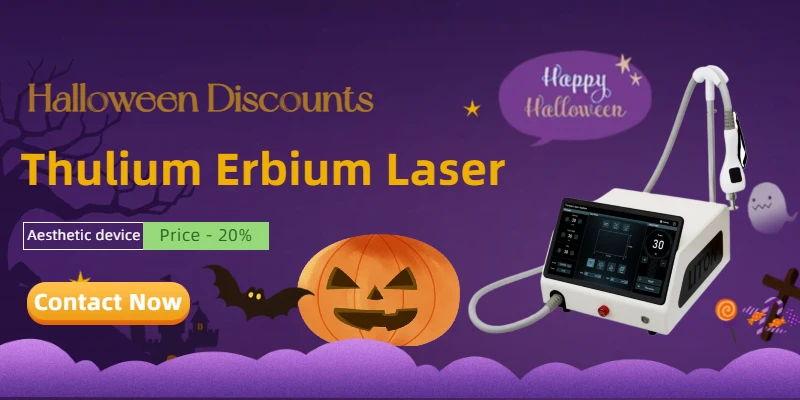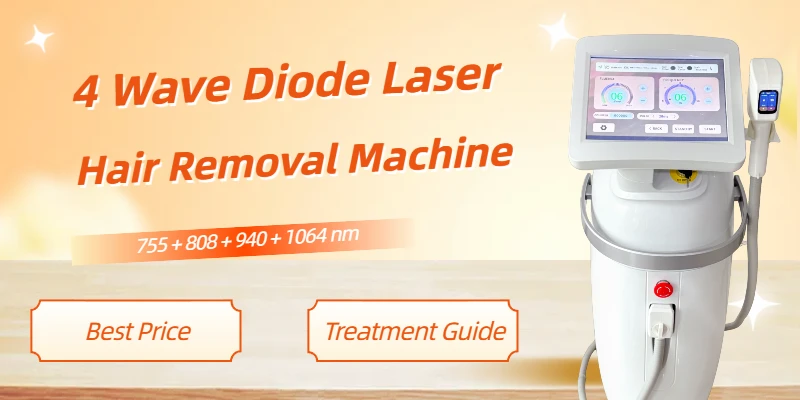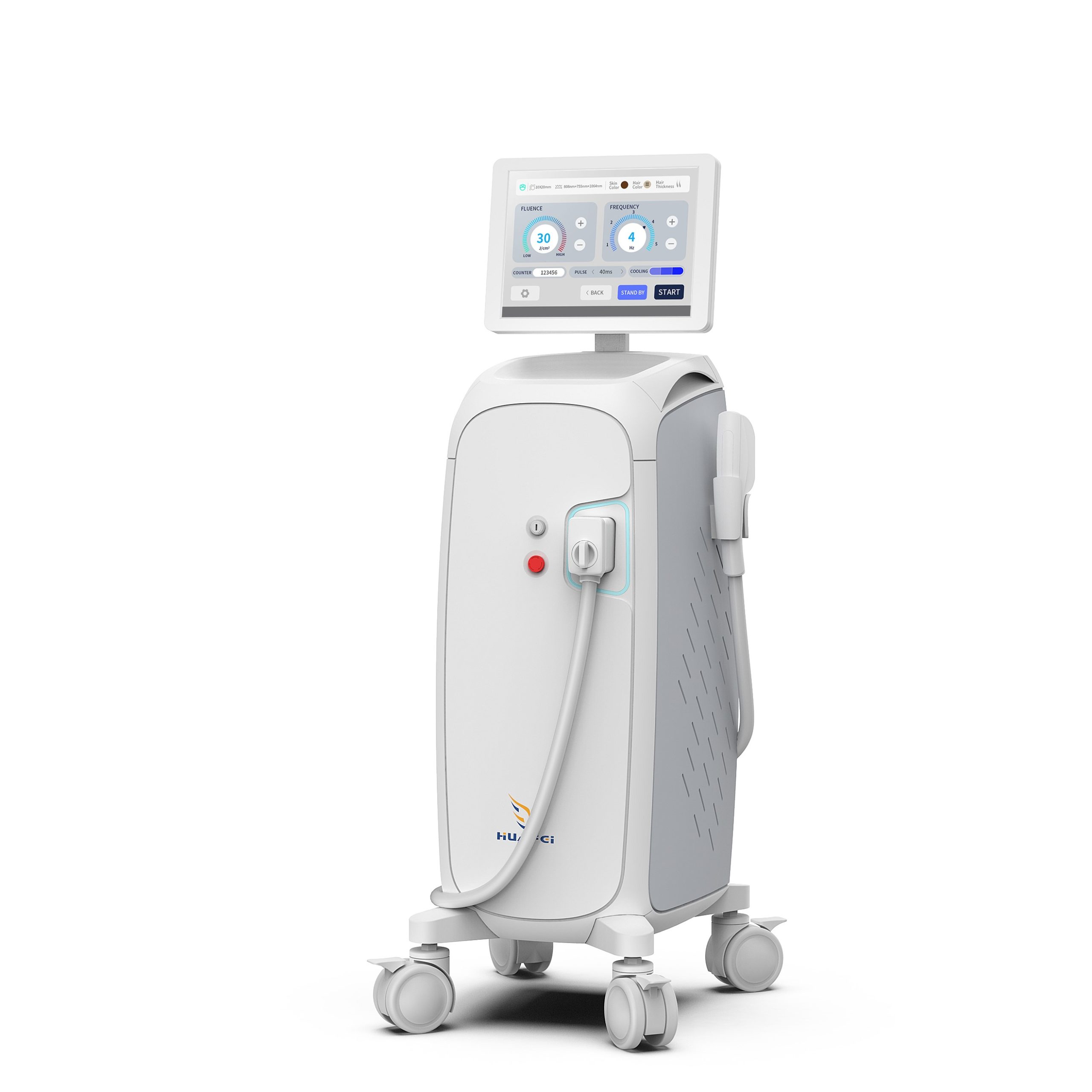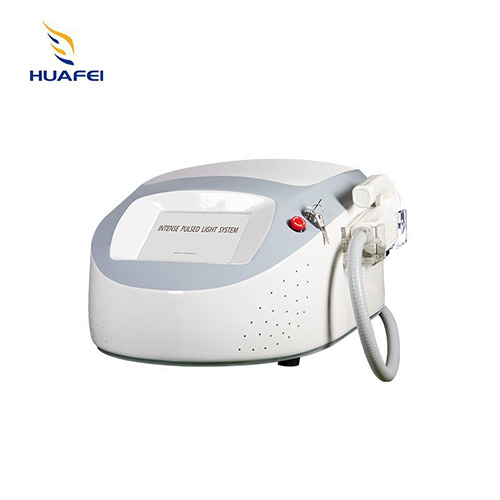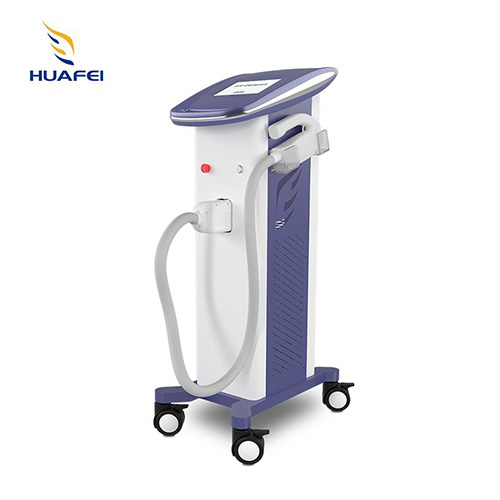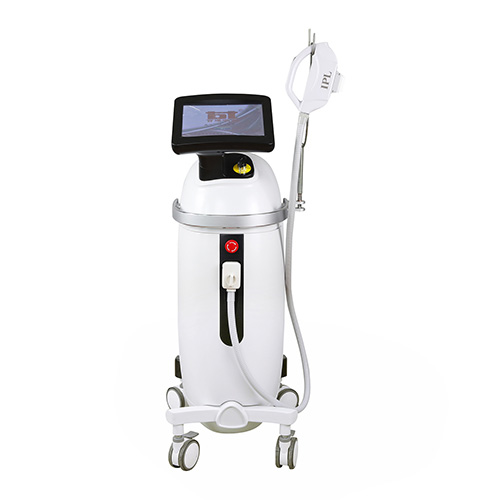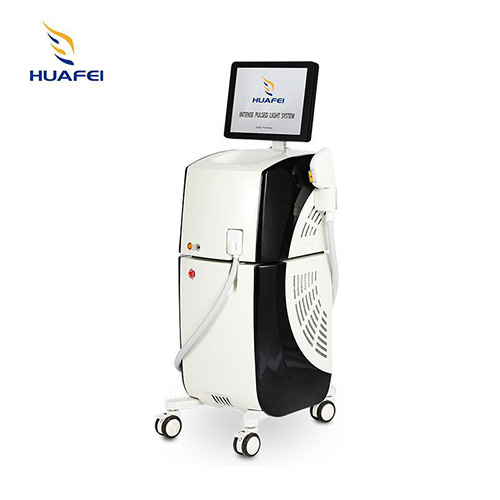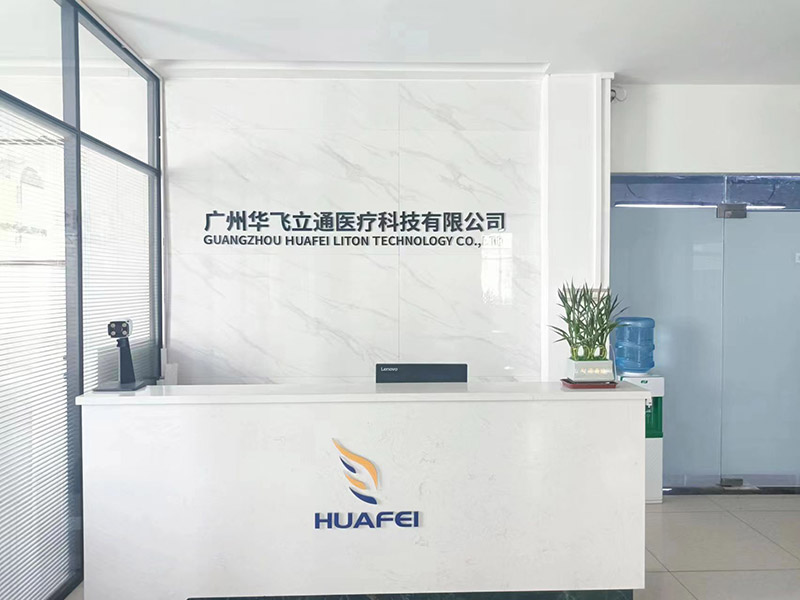Introduction
IPL (Intense Pulsed Light) is a standard feature of every aesthetic medical clinic, boasting a wide range of indications and a high market reputation. However, IPL also comes with a wide range of filters, making wavelength filter selection confusing in actual treatments. This often leaves aestheticians facing challenges in parameter adjustment and accurate control of the endpoint response at the end of treatment.
How do we make good use of different filters for intense pulsed light? And how can we determine the appropriate parameter selection and endpoint response for different treatment issues? Let’s explore this together today.
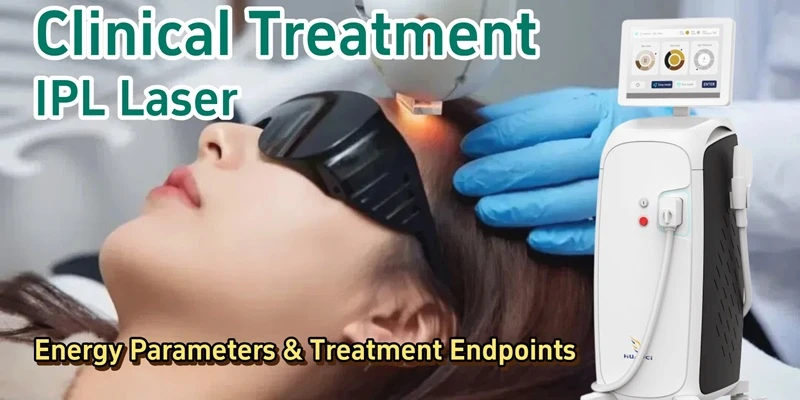
What is IPL?
IPL (Intense Pulsed Light) is a high-intensity, broad-spectrum pulsed light source. The wavelength of light it emits typically ranges from 400nm to 1200nm. Other names include photon, intense light, color light, intense pulsed light, E-light, OPT, SHR, DPL, and AOPT.
IPL is a long-pulsed light source, with each pulse lasting in milliseconds. It primarily utilizes a photoselective thermal effect and offers a wide range of skin cosmetic and therapeutic benefits.
IPL covers a broad spectrum and has a wide range of skin cosmetic and medical applications, particularly for pigmentation and vascular issues.
Intense Pulsed Light Filters
The intense pulsed light filter determines its depth of action and selective target. Different bands have different absorption advantages:
- 515nm/560nm filters: Suitable for superficial epidermal spots such as freckles and sun spots. The 515nm filter is suitable for those with fair skin and is ideal for treating light spots. The 560nm filter has a wider applicability and is the standard first choice for freckle removal.
- 590nm filter: Absorbed by both melanin and hemoglobin, it is suitable for complex pigmentation with both pigment and vascular factors, such as solar lentigo, melasma, and PIH. It whitens and brightens while gently reducing redness, making it a versatile wavelength for both freckle removal and skin rejuvenation.
- 640nm/695nm filters: Mainly absorbed by hemoglobin and water, with reduced melanin absorption, it is suitable for skin rejuvenation and whitening for sensitive skin, as well as for vascular issues such as redness. The 695nm filter is particularly gentle and suitable for chronic lesions such as melasma and PIH that require minimal irritation.
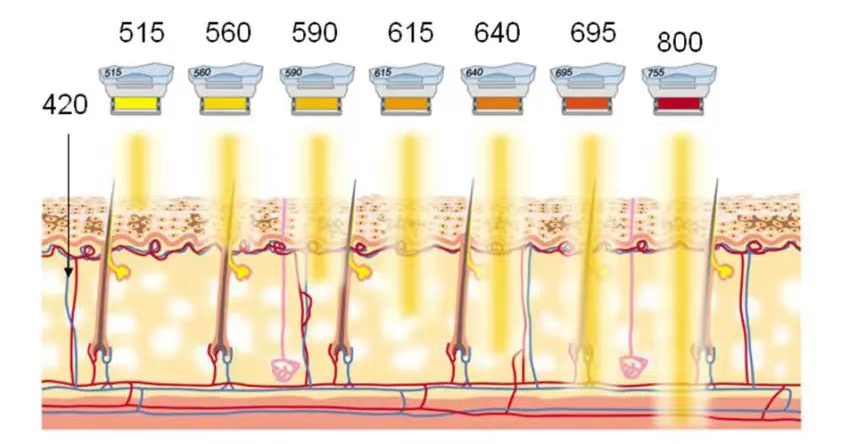
Clinical treatment with laser and intense pulsed light (IPL) revolves around two key dimensions: scientific treatment parameter setting and precise endpoint determination.
Scientific treatment parameter settings specifically include: wavelength selection, pulse width adjustment, energy density setting, pulse number control, pulse interval control, cooling method coordination, and final planning of repeated treatment times.
Accurate treatment endpoint determination includes: preoperative skin assessment, postoperative skin lesion assessment, immediate changes, delayed reactions, and repair measures.
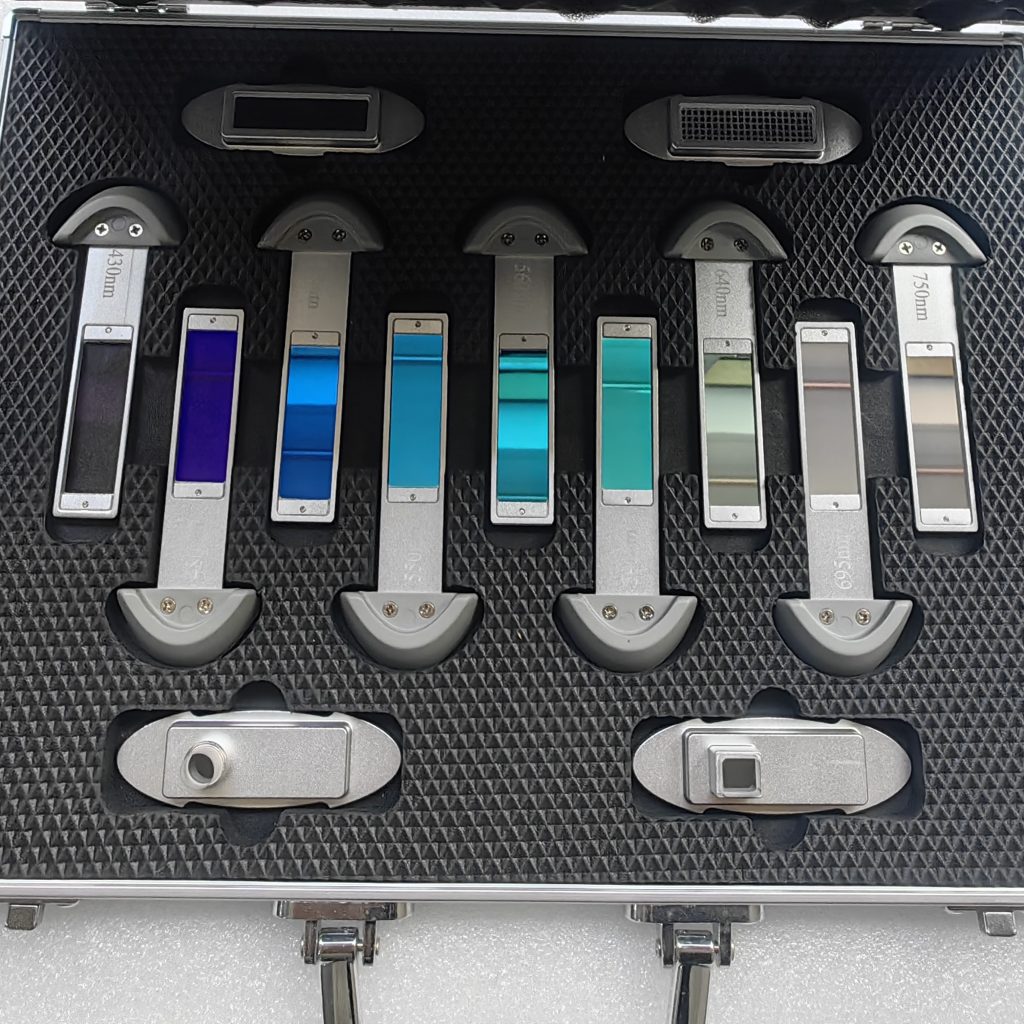
IPL Treatment of Freckles
1. Clinical manifestations of freckles
Freckles are an autosomal dominant pigmentation disease common in young and middle-aged women. The patients’ skin is yellow-brown or yellow-brown spots, which are round or oval, generally 3 to 5 mm in diameter, with varying numbers and symmetrical distribution.
2. Freckles treatment parameter settings
In clinical practice, when using intense pulsed light (IPL) to treat freckles, filters are generally selected based on the patient’s skin tone. The energy density and number of sub-pulses are also determined based on the color and location of the freckles.
For example, using AOPT M22: For patients with lighter skin, such as Fitzpatrick type II, filters with wavelengths of 515nm or 560nm are used. For darker skin (type IV), filters with wavelengths between 590 and 615nm are used. For even darker skin (types V-VI), filters with wavelengths of 640nm or higher are used.
The number of sub-pulses is selected based on the color of the freckles: typically two pulses are used (gentle and safe). However, for lighter freckles, a single pulse can be used. For patients with darker skin or a similar color contrast between their skin and freckles, three pulses can be used.
The energy density of the IPL is selected based on the color of the freckles: darker freckles require a lower energy density; lighter freckles require a higher energy density.
The energy density, number of sub-pulses, sub-pulse width and sub-pulse interval of intense pulsed light vary depending on the device. The treatment endpoint reaction is erythema around the lesions and graying or darkening of the freckle area.
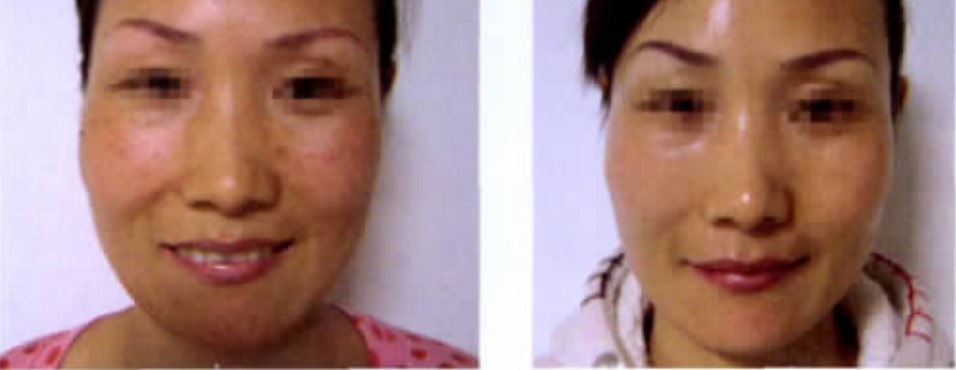
3. Precautions for IPL treatment of freckles
In actual practice, when using photon therapy for facial freckles, after adjusting appropriate treatment parameters based on the patient’s facial condition, a test spot is selected, starting with a low energy level and gradually increasing the energy level. This indicates that the energy level is appropriate for the patient, as the treated area becomes slightly red and the freckles appear darker than before treatment.
If the treated area becomes noticeably red, making it difficult to observe changes in the freckles, the energy density should be appropriately reduced to prevent adverse reactions such as edema, blisters, and hyperpigmentation.
It is also known that freckles have a higher recurrence rate, and the deeper the lesions, the greater the contrast with normal skin, and the more effective the intense pulsed light treatment.
IPL Treatment of Age Spots
1. Skin condition of age spots
Senile plaques, medically known as seborrheic keratosis, are the most common benign skin tumors in the elderly. They may be related to sun exposure and chronic inflammatory irritation. Because they are most common in people over 50, they are commonly known as “age spots.”
Senior spots typically occur on the head, neck, and trunk. They are generally coin-sized, grow outward, and have distinct borders. Their surface appears warty and rough. Some lesions have a smooth surface and barely rise above the skin surface, or only slightly above it. Most people are asymptomatic. Clinically, they can be categorized as plaques, flat papules, and verrucous hyperplasia.
2. Common treatments for age spots
Currently, there are numerous clinical treatments for seborrheic keratosis, including medication, physical therapy, and surgery. However, medications can have significant side effects and require a long course of treatment, making long-term adherence unsatisfactory. Physical therapy also requires repeated treatments and can lead to problems such as hyperpigmentation, blisters, and scar formation. Surgery can cause complications such as scarring and infection. Laser therapy is a preferred treatment option for seborrheic keratosis.
3. Age spot treatment parameter settings
For early-stage seborrheic keratosis (which manifests only as localized hyperpigmentation without surface elevation), various Q-switched lasers (such as Q-switched ruby laser, Alexandrite laser, and YAG laser) or picosecond lasers can be used for treatment. After treatment, localized scabs may form, but scarring will not occur. This is the optimal time to treat seborrheic keratosis, especially on the face.
Related studies have shown that intense pulsed light (IPL) can achieve similar therapeutic effects as laser therapy for epidermal pigmentary disorders. According to the “Expert Consensus on the Clinical Application of Intense Pulsed Light (2017),” IPL is an ideal treatment for superficial, uneven pigmentation related to skin texture and pigmentation, such as solar lentigo, seborrheic keratosis, dark skin tone, and pigmentation abnormalities, in photoaging.
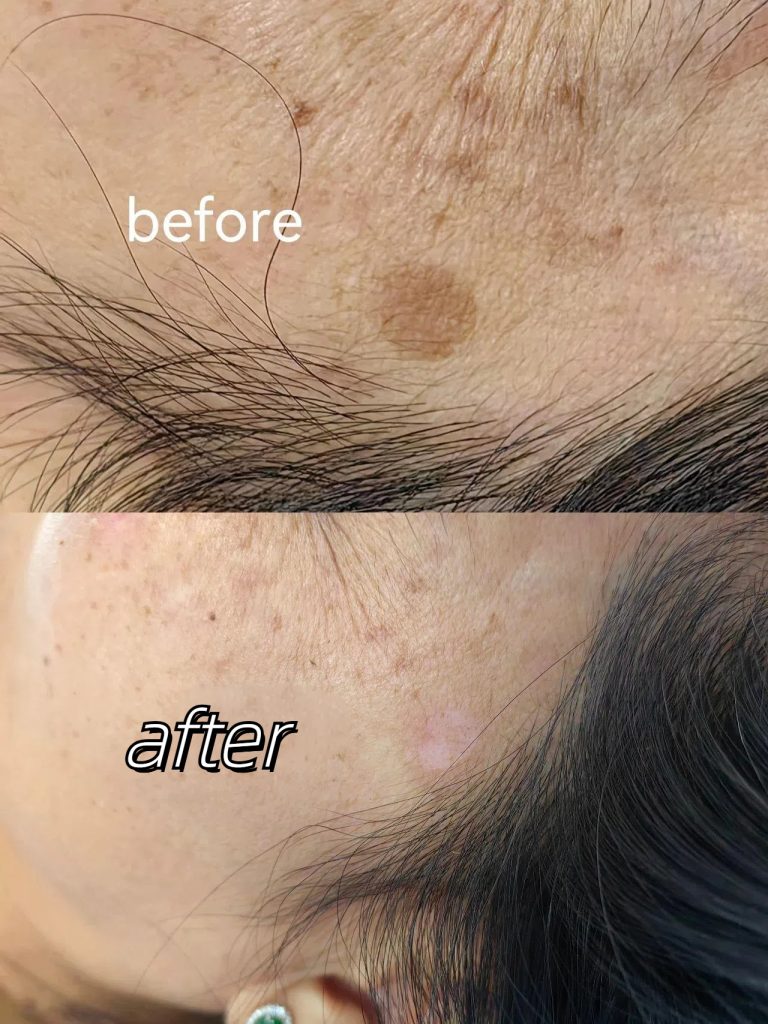
The disadvantages of intense pulsed light treatment for age spots are that it requires repeated treatments, and its effectiveness is significantly affected by lesion thickness, making it only suitable for thinner or smaller lesions.
- Pulse Width: Generally, it can be set to 3-8ms. For darker skin or thicker lesions, the pulse width can be extended to 8-12ms.
- Pulse Number: 2-3 pulses (gentle and safe).
- Filter Options: 560-590nm (for superficial pigmentation) or 640nm (for both skin rejuvenation and pigmentation treatment).
- Treatment Endpoint: Lesion deepening (similar to freckle treatment), immediate whitening, and if hyperplasia is present, epidermal exfoliation.
Since most patients with age spots are in the menopausal stage, the probability of melasma occurrence is greatly reduced, and the parameters can be appropriately positive.
IPL Acne Treatment
According to the “Expert Consensus on the Clinical Application of Intense Pulsed Light (2017),” indications for intense pulsed light (IPL) treatment of acne include:
- Reduction of red marks and hyperpigmentation after resolution of inflammatory acne lesions, with significant efficacy;
- Moderate acne characterized by papules and pustules. Acne treatment requires a comprehensive, sequential approach; IPL alone is not preferred and can be combined with medication.
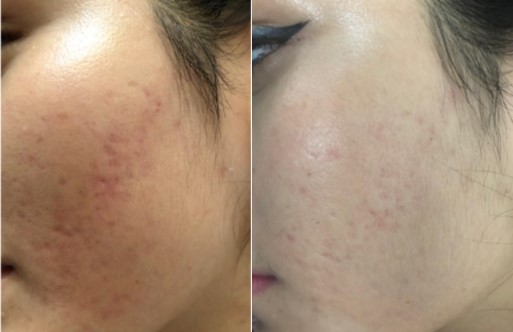
Parameters should be adjusted based on the patient’s inflammatory lesion characteristics, skin tone, and tolerance.
- Optical Filters: 420nm/560nm/590nm/640nm filters are recommended. If the patient has numerous inflammatory papules, a 420nm filter is recommended for anti-inflammatory purposes. If the patient has dark pigmentation and severe acne scars, a 560nm filter is recommended.
- Double-pulse or triple-pulse treatments are recommended, with a pulse width of 3.0-4.5ms, a pulse delay of 20-40ms, and an energy density of 15-18J/cm². Treatments should not overlap, with mild redness of the lesions as the treatment endpoint. A course of 4-6 treatments is considered a course of treatment, with 3-4 weeks between treatments.
- When using a 420nm filter for inflammatory papules, a small spot size and conservative energy level are recommended. The interval between treatments can be shortened, such as once every two weeks.
Treatment Notes
When using intense pulsed light therapy, avoid using the same parameters for the entire face. Instead, treat the affected area in sections, closely monitor the treatment endpoint, and dynamically adjust the parameters based on skin reactions. For special cases, enhanced post-operative follow-up is necessary to ensure treatment safety and effectiveness.
From a core treatment perspective, three key points must be firmly grasped:
- Selecting the appropriate energy and pulse width.
- A reasonable number of repeated treatments.
- A clear treatment endpoint.
Best IPL Laser Machine
If you’re looking for the best IPL machine, you need to consider both its performance and treatment results. The core components of an IPL machine are the light source (IPL lamp), the heat dissipation system, and the treatment system. Liton Laser, a cosmetic device manufacturer established in 2001, specializes in IPL, its core product. We began producing our first IPL machine in 2003 and sold it to Italy.
We prioritize the performance of our IPL machines. We use German IPL lamps, boasting the highest energy density in the industry, and use purified or distilled water to control the light output. Typically, an IPL machine has a lifespan of over eight years.
1. IPL vs. BBL Laser
Liton Laser has also recently developed and promoted a new version of IPL machine: low-temperature freezing anti-aging BBL laser.
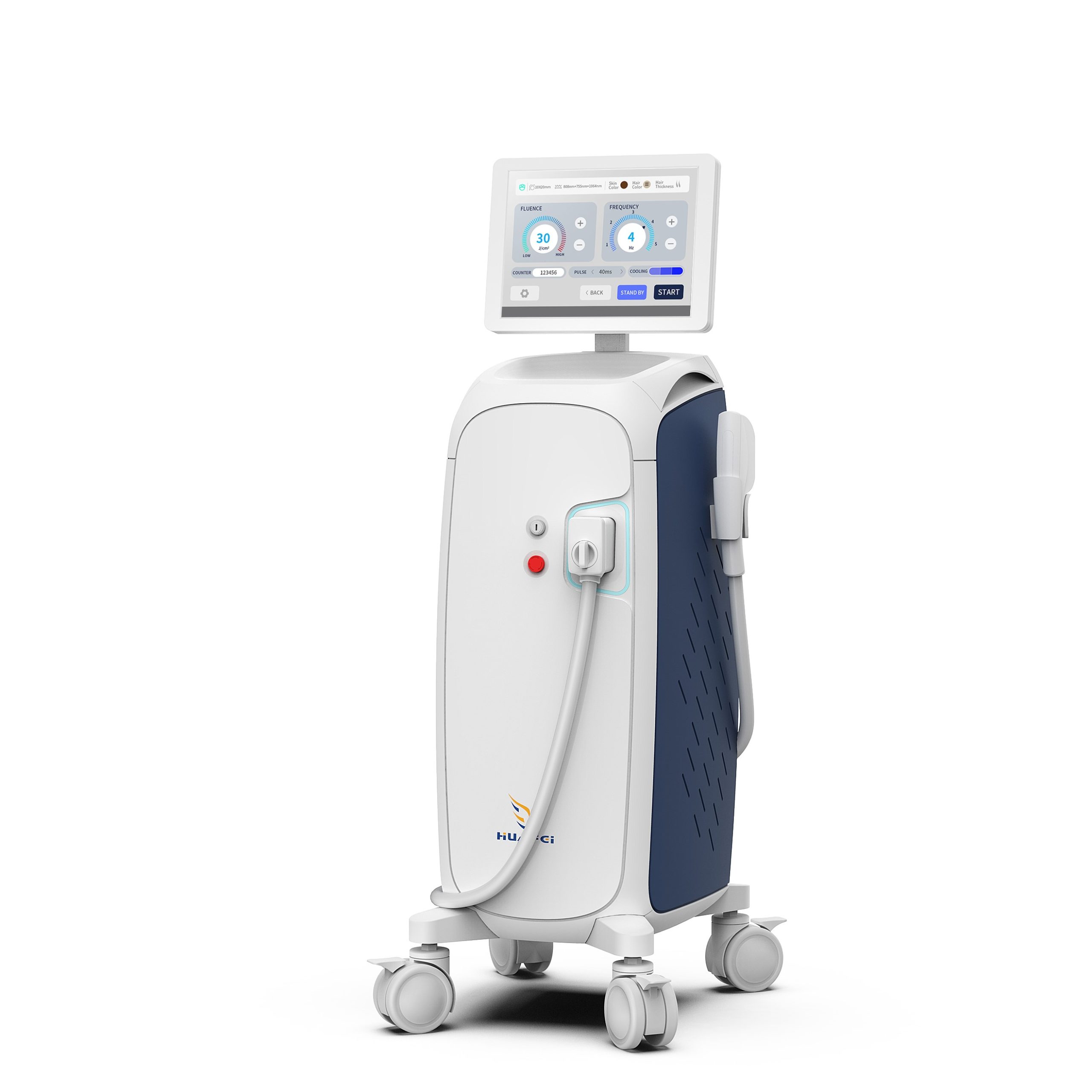
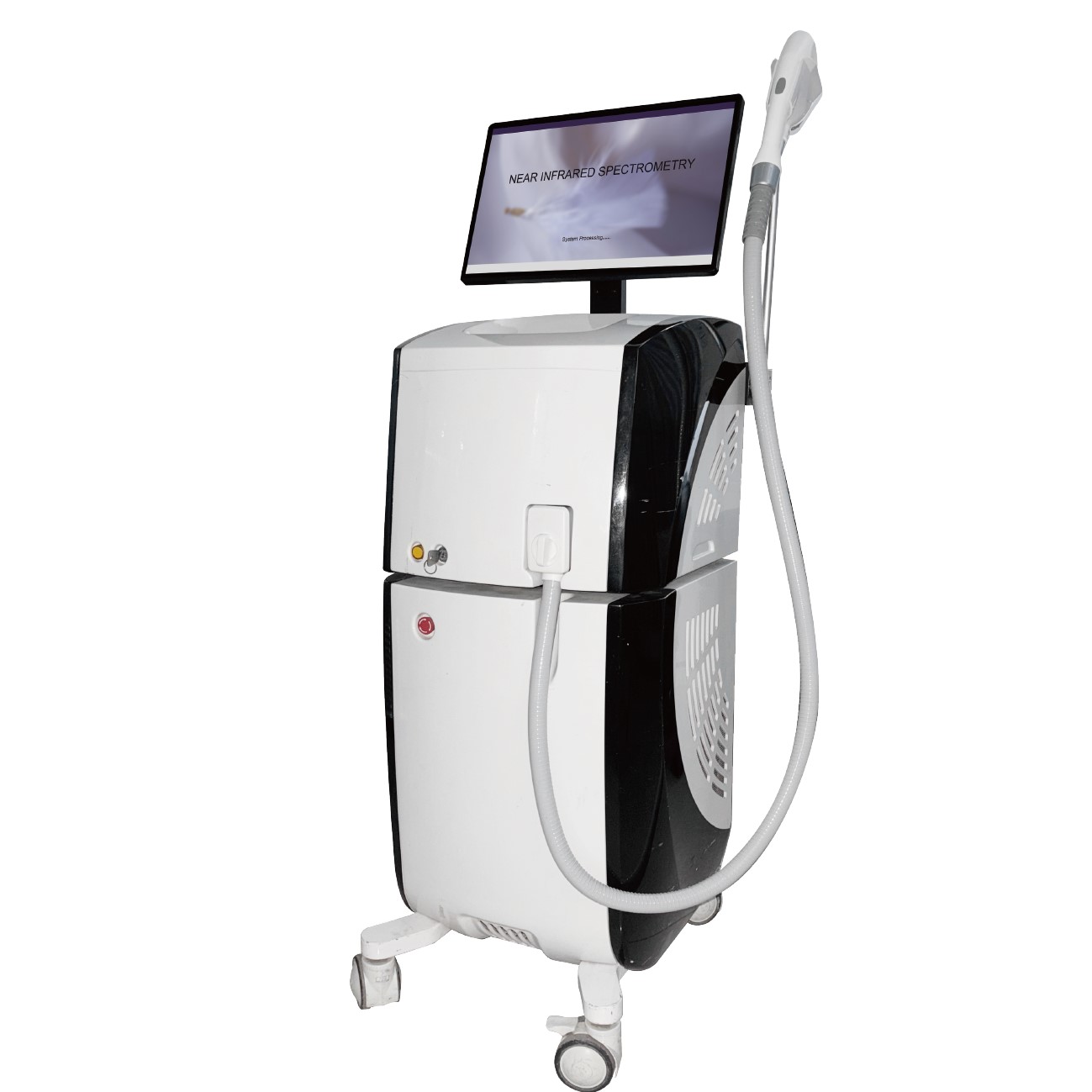
|
Feature |
IPL |
BBL |
| Wavelength &
Handle |
The wavelength range is 400~1200nm,
and single wavelength handpiece and replaceable filter handpiece are available. |
Provides 9 filters, using different wavelength
handpiecesfor different problems |
| Number of pulses | IPL usually has 3 pulses | BBL has 10 pulses |
| Cooling &
Patient Comfort |
The IPL handpiece has a cooling sheet
and requires cold gel to be applied to the patient’s skin |
Sapphire contact cooling,
the skin temperature can be between 0~30℃, BBL low temperature cooling treatment |
| Clinical Applications
& Efficacy |
Photorejuvenation, pigmented lesions,
superficial vascular lesions; 4–6 sessions |
Photorejuvenation, acne clearance,
vascular lesions,skin tightening; BBL is more effective in anti-aging |
| Spot area &
frequency |
The spot area of the IPL device is 10×30
or 15×35 mm |
BBL spot size 15×45 mm;
frequency up to 20 Hz |
If you need to purchase a high-quality IPL machine or a new BBL laser, please feel free to contact us. Liton Laser will provide you with a free quote.
2. Get Treatment Guide
Liton Laser has established a cosmetic laser training center in China. We have extensive clinical experience with leading laser treatments, with IPL cosmetic treatments being a key research area. We have also compiled a document titled “IPL Clinical Treatment Guidelines.”
If you require detailed guidelines for IPL treatments, please feel free to contact Liton Laser.
Frequently Asked Questions
Q1: Are IPL devices safe?
IPL devices are very safe. Because IPL’s wavelength is 400nm-1200nm, it is a non-invasive device. IPL treatment is relatively safe and gentle, and does not have ablative function.
Q2: Are IPL lasers safe?
IPL lasers aren’t actually lasers and are very safe. IPL (Intense Pulsed Light) is actually a broad-spectrum, long-pulsed light. The treatment is gentle and comfortable, and generally safe. Photorejuvenation is a classic IPL treatment and one of the safest.
Q3: Are IPL and BBL the same?
BBL is the latest version of IPL. IPL is the general name for the original version of intense pulsed light technology, which later evolved into upgraded versions such as DPL, OPT, and AOPT. Currently, BBL is the latest version of IPL technology. Therefore, BBL is a new version of IPL, but the technical principles are the same.
Q4: Are IPL results permanent?
While IPL hair removal results are permanent, IPL skin rejuvenation results are not. After six IPL treatments, the hair follicles are destroyed and unable to produce new hair, making the results permanent. However, the effects of IPL skin rejuvenation usually only last for 2 or 3 years and require regular long-term treatment because human skin ages over time.
Q5: Are IPL devices effective?
IPL treatments are highly effective. IPL is the simplest and most effective cosmetic device, offering a wide range of treatment options, making it a universal laser. Through its photothermal effect, IPL is highly effective for photorejuvenation, hair removal, blemish removal, and acne treatment.


